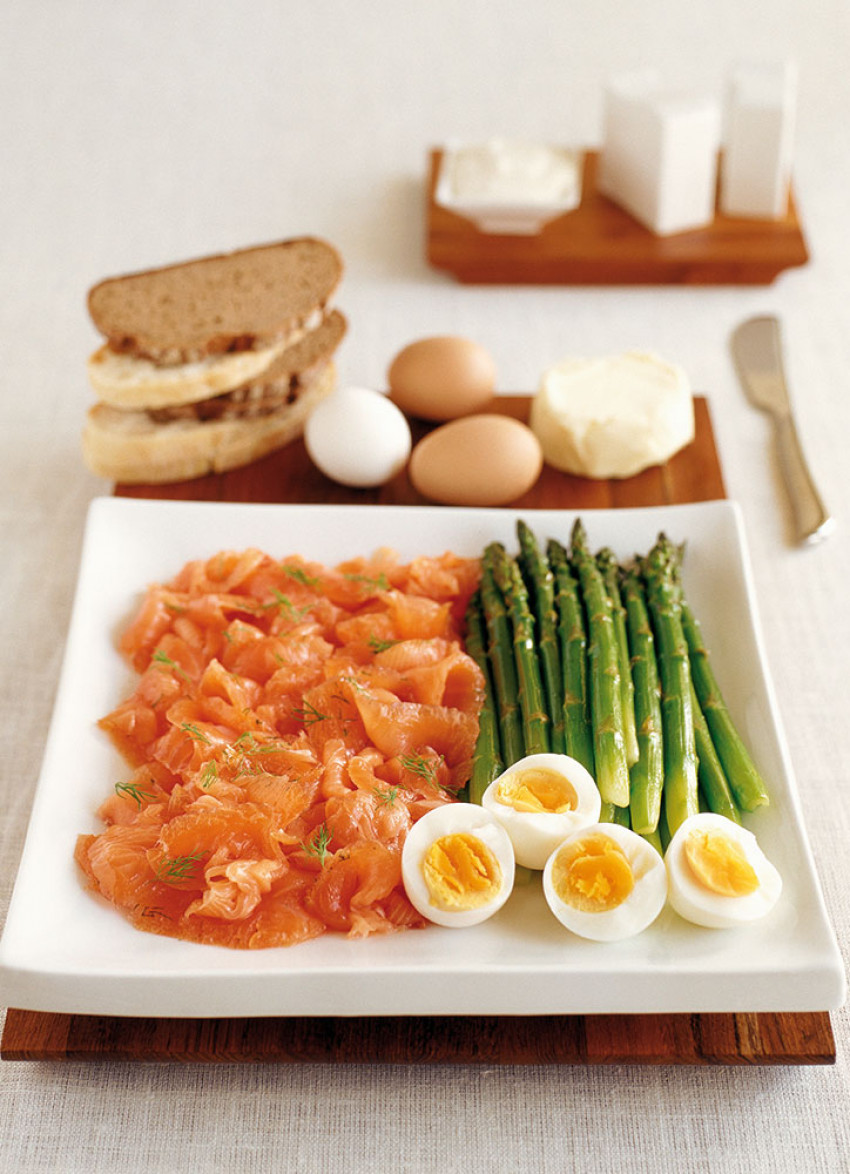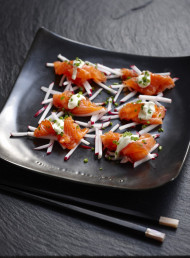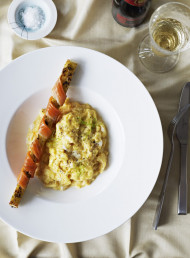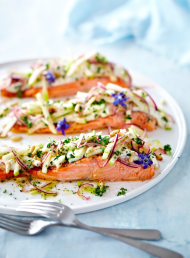Cured Salmon, Asparagus and Soft Boiled Eggs
Photography by Photography by Vanessa Wu.
This is a great brunch platter when you don’t want to be in the kitchen. Everyone can help themselves.
Serves: 8
INGREDIENTS
1 kilogram side of salmon, pin bones removed*
Cure
150 grams caster sugar 100 grams sea salt
1 teaspoon freshly ground white pepper
fine zest of 1⁄2 an orange fine zest of 1 lemon
1⁄4 cup pernod, vermouth or vodka
1 bunch dill or fennel,
roughly chopped
Horseradish Sauce
1 cup sour cream
2 tablespoons horseradish relish or more to taste
To serve
8 eggs at room temperature 24 spears asparagus, blanched
selection of breads e.g. dark rye and sourdough
unsalted or cultured butter lemon wedges
METHOD
Cure: Combine the sugar, salt, pepper, zests, pernod and the dill in a bowl – the mixture will look like wet sand.
Cover a shallow, non-reactive tray with plastic wrap and place the salmon on top, skin side down. Spread the cure evenly over the salmon, ensuring all the flesh is covered. Wrap tightly and place a bread board on top. Refrigerate for up to 24 hours. The longer the salmon is cured, the firmer the flesh becomes. If you prefer a very moist, lightly cured flavour, leave for only 8-10 hours.
Unwrap the salmon and drain off the liquid. Wipe off the curing mixture with a clean, damp cloth and discard. Use a very sharp, flexible knife to cut the salmon into thin slices. Arrange on a large serving platter.
Bring a pan of water to the boil and add the eggs. Cook at a steady simmer for 4 minutes from when the water returns to the boil. Cool the eggs under cold running water. Drain then place the eggs on the platter along with the asparagus and lemon wedges.
Horseradish sauce: Combine the sour cream and horseradish, season and tip into a serving bowl.
To serve: Place the platter in the middle of the table. Pass the breads, butter and horseradish sauce separately. Serves 8
* To remove pin bones from salmon: Fillets almost always contain small pin bones. To remove them, first run your finger down the center of the fillet, pushing down gently so the bones pop out slightly as they are located. Using a pair of tweezers or needle-nose pliers, pull out each bone carefully and with the grain, to avoid tearing the flesh.
Keep up to date with
dish weekly recipes,
food news, and events.
latest issue:
Issue #114
Autumn has arrived, and with it, the latest issue of dish, jam-packed with recipes that will have you fizzing to get in the kitchen! With a long Easter lunch featuring perfectly pink, blushing roast leg of lamb and wildly decadent baked mashed potatoes with caramelised onions, to simply scrumptious chocolate treats and sensational seasonal baking this issue has you covered - we reckon the Hot Cross Buns are our best yet! Salads make way for soothing soups, pies, puddings and our cover star beef cheek ragù with spaghetti – a must-make dinner for family and friends. With over 60 recipes in our latest issue there’s plenty of inspiration to keep you busy – and well-fed! Don’t forget to share your dish dishes with our Facebook community.







